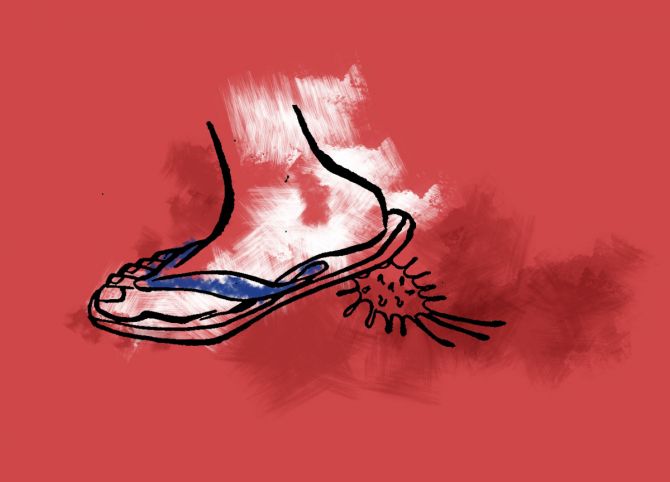 | « Back to article | Print this article |
The sudden stop in economic activity led to a sharp decline in employment-intensive sectors like construction, manufacturing and trade, hotels, transport etc.

The April-June quarter GDP data, released on Monday, showed the deepest damage in the employment-creating sectors, like construction and manufacturing.
This comes at a time the Centre and the finance ministry are talking about green shoots in the economy.
According to the data released by the National Statistical Office, the construction sector fell a staggering 50.3 per cent, while manufacturing sector contracted by 39.3 per cent, at constant prices.
New investments as a percentage of GDP, measured by gross fixed capital formation, came in at 19.5 per cent (at nominal prices), which is the lowest since the new GDP series with the 2011-12 base year began, said Madan Sabnavis, Chief Economist with CARE Ratings.
“Investment growth witnessed a sharp contraction of 47.9 per cent in the first quarter.
"There has been a significant drop (9.5 per cent) in the share of investment in the first quarter of the ongoing fiscal year compared with the same period last year,” Sabnavis said.
“Almost all the major sub-sectors reported a contraction, with construction activities, manufacturing sector and trade, hotels, and transport in the services sector being hit the worst hit.
"The contraction in some services is large, and as these continue to be under restricted functioning, the improvement in the coming quarters will be staggered,” said economist M Govinda Rao, chief economic advisor with Brickwork Ratings.
Radhika Rao, economist at DBS Bank, said the sudden stop in economic activity led to a sharp decline in employment-intensive sectors like construction, manufacturing and trade, hotels, transport etc.
“Under the demand breakdown, aggregate demand which accounts for two-third of spending, was dragged into red by equal measure by consumption as well as investment growth, overshadowing a pick-up in government spending,” Rao said.
“Consumption weakness in the current cycle stems from weaker disposable incomes and uncertainty over employment prospects, rather than changes in the rate cycle.”
“This suggests that fiscal push will carry a larger multiplier than purely easier financial conditions. Looking ahead, we expect growth in the next three quarters to register smaller declines as the economy continues to open up despite a rise in infection cases, and focus shifts to protecting livelihoods,” she said.
“From the demand side except government final consumption expenditure, all other growth drivers namely private final consumption expenditure, gross fixed capital formation and exports recorded high double digit negative growth,” said Sunil Sinha, principal economist, India Rating.
Sinha added that India Ratings expects year-on-year economic contraction in all four quarters of FY21.